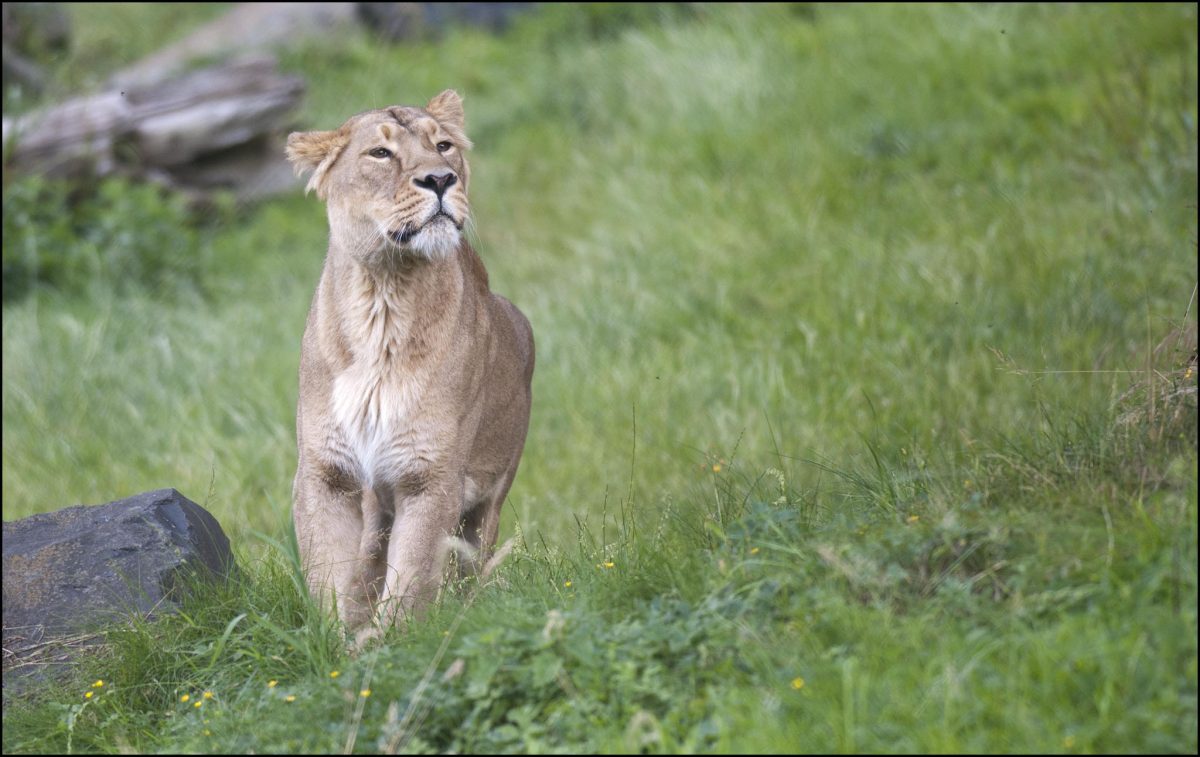Factfile
Where they live
Gir Forest Reserve of Gujerat State, Western India
Habitat
dry deciduous forest
Size
head body length: 1.7-2.5m (male) and 1.4-1.75 m (female) tail length 70-105 cm, height at shoulder: 1-1.23m (male) and 80-107m (female)
Weight
120-250kg (male) 120-180kg (female)
Lifespan
16-18 years
Threats
They are threatened by the destruction of their forest habitat and its degradation by increased agricultural development. This also leads to conflict and killing by farmers as lions kill livestock as the number of prey animals is reduced. They are also hunted and killed by poachers. The surviving wild population of some 350 animals is so small that it is also under threat from disease and natural disaster.
Did you know...
- Lions can rest and sleep for 20 hours per day
- A male can eat 40 kg of meat in one sitting
- A male lion’s roar can be heard up to four miles away
More about Asiatic lions...
In historical times Asiatic lions were found from the Balkans, through the Arabian Peninsula to Central India. They were well-known in Biblical times and in the Roman circuses, but became extinct in Israel at the time of the Crusades. They were found in Iran and Iraq until after the First World War.
Today just 250 – 300 survive in the wild and these are restricted to the Gir Forest Wildlife Sanctuary in Western India, a site sadly threatened by habitat destruction, encroachment by humans and poaching.
Asiatic lions are smaller and lighter than their African counterparts and have a shaggier coat with a distinctive fold of skin that runs along the belly. They have a longer tassel of hair on the end of their tails and longer tufts of hair on the elbows and males have shorter manes.
Like all cats they have retractable claws (except cheetahs), powerful jaws and sharp teeth which are used to bring down prey such as sambar and chital deer, nilgai antelope, gazelle, wild boar, water buffalo and occasionally domestic livestock. The prey is approached by stealth and then brought down before it outruns the lions.
They live in small prides with an average of only two female as compared to the 4-6 females of an African pride.
The males are much less sociable than African males and only associate with the pride when hunting or mating.
Females normally give birth to two or three cubs after a gestation period of 100-119 days. The cubs begin to eat meat at three months but are not fully weaned until six months old.
They stay with their parents for about a year while to hone their hunting skills and reach maturity at three to four years.
How you can help...
Adopt a Lion (Asiatic)!
Help prevent animals from becoming extinct by adopting an animal, you'll be supporting our zoo too!
Gold Adoption
Help support our zoo with a Gold adoption package with an additional zoo admission ticket, and personalised message displayed outside your adopted animalʼs enclosure.
£55.00
Find out moreSilver Adoption
Help support our zoo with a Silver adoption package it includes an adoption certificate, a zoo admission ticket and lots of zoo treats!
£41.50
Find out more











